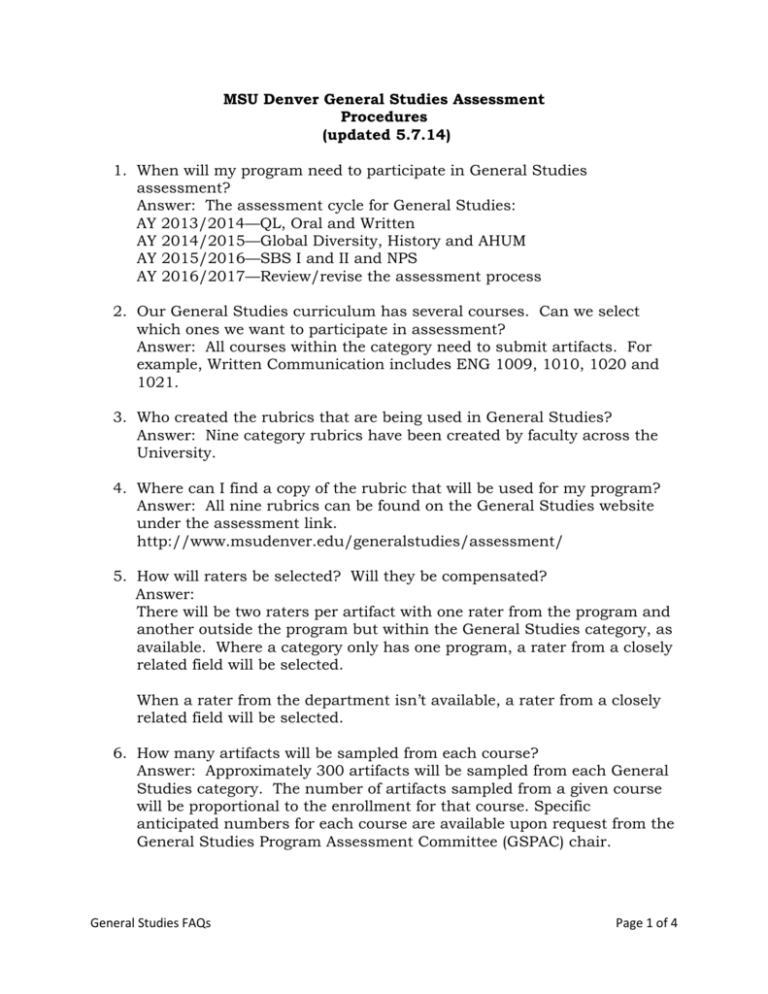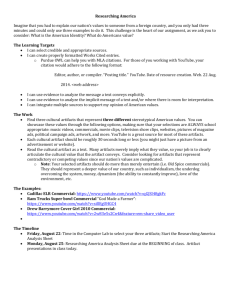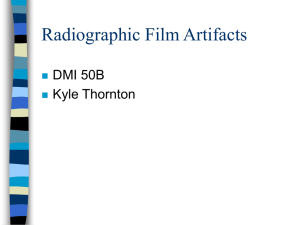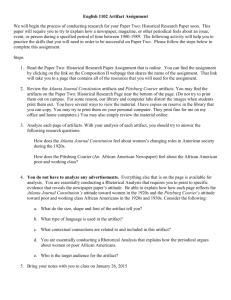General Studies Procedures
advertisement

MSU Denver General Studies Assessment Procedures (updated 5.7.14) 1. When will my program need to participate in General Studies assessment? Answer: The assessment cycle for General Studies: AY 2013/2014—QL, Oral and Written AY 2014/2015—Global Diversity, History and AHUM AY 2015/2016—SBS I and II and NPS AY 2016/2017—Review/revise the assessment process 2. Our General Studies curriculum has several courses. Can we select which ones we want to participate in assessment? Answer: All courses within the category need to submit artifacts. For example, Written Communication includes ENG 1009, 1010, 1020 and 1021. 3. Who created the rubrics that are being used in General Studies? Answer: Nine category rubrics have been created by faculty across the University. 4. Where can I find a copy of the rubric that will be used for my program? Answer: All nine rubrics can be found on the General Studies website under the assessment link. http://www.msudenver.edu/generalstudies/assessment/ 5. How will raters be selected? Will they be compensated? Answer: There will be two raters per artifact with one rater from the program and another outside the program but within the General Studies category, as available. Where a category only has one program, a rater from a closely related field will be selected. When a rater from the department isn’t available, a rater from a closely related field will be selected. 6. How many artifacts will be sampled from each course? Answer: Approximately 300 artifacts will be sampled from each General Studies category. The number of artifacts sampled from a given course will be proportional to the enrollment for that course. Specific anticipated numbers for each course are available upon request from the General Studies Program Assessment Committee (GSPAC) chair. General Studies FAQs Page 1 of 4 7. What options do departments have for sampling student artifacts? Answer: There are several possibilities depending on student enrollment, and departments can choose which option works best for them. Option A—students from all sections of a course will be pooled and a random sample of students will be drawn from the pool to submit artifacts. Option B—a random sample of sections will be selected and all students (or a randomly selected subset of students) from those sections will submit artifacts to be rated. Option C— a small random sample of students (e.g. 3 – 5) will be selected from every section to submit artifacts. If a program has only one or two sections of a course, all students from all sections will submit artifacts. If Option B or C is selected, over-sampling will be necessary to allow for student non-compliance and still achieve the desired number of artifacts for rating. In the case of over-sampling, the GSPAC will randomly select from among the submitted artifacts to achieve the required number. Departments are welcome to consult with the GSPAC regarding sampling procedures. 8. How many artifacts per SLO should be submitted? Answer: Ideally, one artifact should be used to assess all SLOs assigned to that category. However, if that is not possible, multiple artifacts may be necessary. Each department will complete the submission template (available from the GS Assessment website http://www.msudenver.edu/generalstudies/assessment ) so that artifacts and rubric elements can be properly matched. 9. When will the artifacts be submitted? Answer: Artifacts will be made available to the GSPAC by the last day of finals week of the semester in which the artifacts are collected. 10.How and in what format will the artifacts be submitted to the GSPAC? Answer: Artifacts will be submitted electronically to the GSPAC. The submission process depends on the nature of the artifact and the department’s preference. Some options include: Blackboard Pdf scans Electronic Word documents Media files General Studies FAQs Page 2 of 4 11.What are the main responsibilities of the departments? Answer: a) Each department will determine the artifact(s) to be submitted by students. b) Each department will be responsible for completing the submission template describing which SLOs are matched with which artifact(s) and which sampling plan should be used. c) Each department should ensure that the students complete the artifacts. d) Each department will submit the collected artifacts to the GSPAC by the submission deadline. e) Each department should assist with identifying potential raters from their department. 12.How and to whom will the results of the artifact ratings be reported? Answer: The results will be reported in aggregate form (i.e. as summary statistics) by course, not by individual section. The results will be reported annually: To the Faculty Senate General Studies committee. To the departments and Deans from the category programs assessed that year. To the University community online. To the AVP for Curriculum and Academic Effectiveness 13.Who is GSPAC? Answer: The General Studies Assessment Committee has the following membership: Written communication – 1 LAS Oral communication – 1 LAS Quantitative Literacy – 1 LAS Arts and Humanities – 1 LAS Historical – 1 LAS Social and Behavioral Sciences I and II – 1 LAS, 1 SPS, 1 SCOB Natural and Physical Sciences – 1 LAS, 1 SPS Faculty Senate General Studies Committee - 2 14.What does GSPAC do? Answer: The committee is charged with: Review and interpret the assessment data gathered each year Report annually on the assessment findings to the Faculty Senate General Studies committee. Report annually on the assessment findings to the faculty and Deans General Studies FAQs Page 3 of 4 from the category programs assessed that year. Report annually to the AVP for Curriculum and Academic Effectiveness Provide recommendations for faculty development needs and opportunities to the AVP and Deans. Recommend changes to the assessment process as needed regarding the elements of data gathering, report formatting, etc. Revise rubrics in consultation with raters, faculty and FSGS committee as needed The committee will elect a chair from among its members. * Please send feedback or additional questions to any of the following: the Associate Vice President for Academic Effectiveness, the Faculty Senate General Studies Committee chair, or the General Studies Program Assessment Committee chair. General Studies FAQs Page 4 of 4








